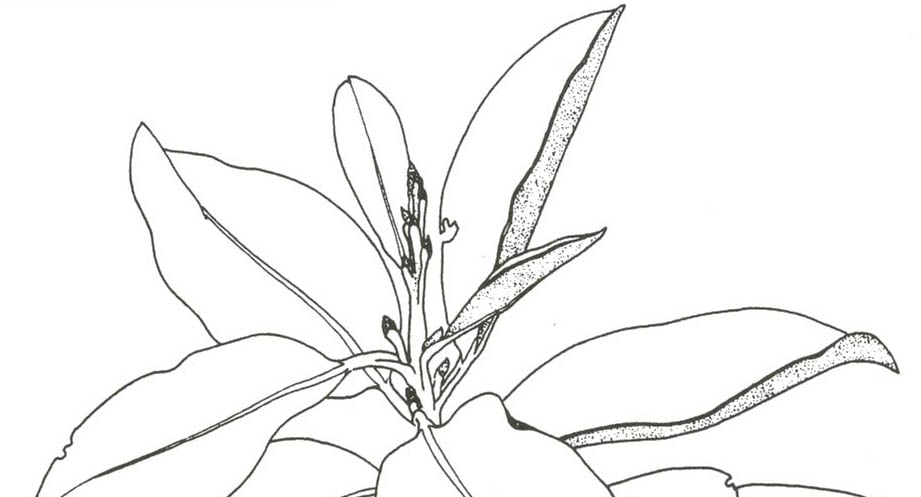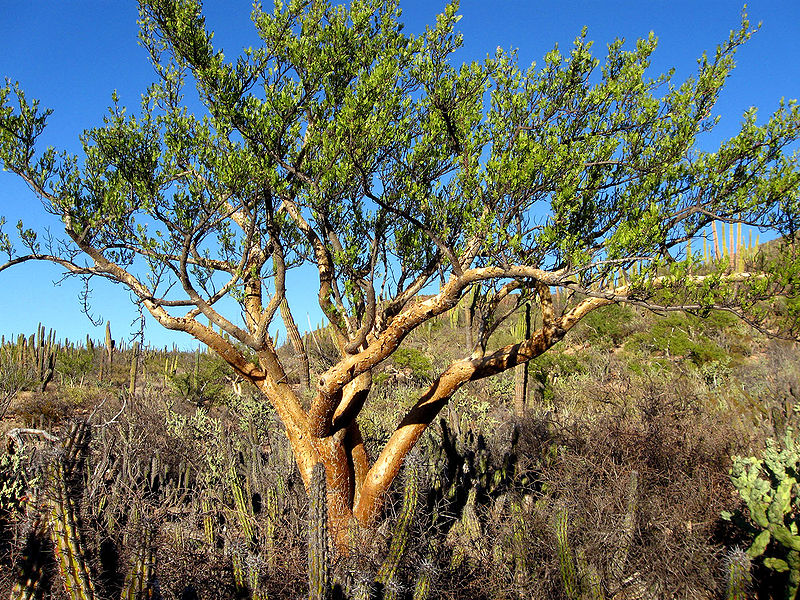

Contributor
- Topics: Archive, Growing for Biodiversity
In researching and updating material for the book, Trees of Golden Gate Park, we stumbled upon several mature trees not included in the original series of articles on the park’s trees. Here, Dr McClintock returns with another tree of note, found both in Strybing Arboretum and in the National AIDS Memorial Grove.
One of the most distinctive trees in forests from Southern California north into British Columbia is the largest tree of the heath, or rhododendron, family (Ericaceae). Notable for colorful, exfoliating bark, clusters of white flowers in spring, and brightly colored fruits in fall, madrone (Arbutus menziesii) is an evergreen tree reaching one hundred feet in the wild, though usually less in cultivation. Also known by its Spanish name, madroña, it may be found in close association with coast live oak (Quercus agrifolia), coast redwood (Sequoia sempervirens), Douglas fir (Pseudotsuga menziesii), tanbark oak (Lithocarpus densiflorus), and big-leaf maple (Acer macrophyllum). Like the Douglas fir, its specific epithet recognizes one of the West’s earliest botanical explorers, Scotland’s Archibald Menzies.

Madrone is an attractive tree with thin, reddish bark that exfoliates in strips to reveal a lighter, smoother inner bark; on old trees, the bark is flaky and darker in color. Leaves are oval or oblong, smooth on both surfaces, and either entire (without teeth) or finely serrate; they are three to five inches long and about half as wide. The shiny, dark green, upper surface of the leaf contrasts with the pale, sometimes almost white, underside. The appealing urn-shaped flowers, usually white but occasionally pinkish, are produced in branched panicles, six inches long, at the ends of shoots; individual flowers, only about one-third of an inch long and waxy, bear a strong resemblance to those of manzanita (Arctostaphylos), which is in the same family. Bright orange-red spherical fruits sparkle against the foliage in autumn in good years; the half-inch diameter, fleshy fruits usually have a bumpy or granular surface. The fruits are a popular food source for a variety of wildlife, and, though bland, were sought after by Native Americans on the West Coast. The wood is heavy and fine-grained and was used for woodworking and for fuel. Madrones have never been common enough in any region to have become an important part of the lumbering industry.
Though found naturally in a variety of habitats, from dry sunny hillsides to moist bottomland, madrone has generally proven frustrating as a garden or landscape plant; despite all its appealing characteristics, it is only occasionally planted in California since it so often succumbs to soil-borne water molds before reaching any size. Trees grown from more northerly stock, tolerant of more soil and atmospheric moisture, can sometimes be more dependable. It makes a beautiful, round-headed evergreen tree when happy and can be a striking addition to the native garden. The oldest specimen in Golden Gate Park was planted decades ago among the coast live oaks at the western end of de Laveaga Dell, now the site of the National AIDS Memorial Grove; this tree, crowded by the more vigorous and dominant oaks and leaning significantly, is undoubtedly struggling for more sunlight. A number of young madrones, planted in the 1980s, are now developing into fine small trees among the perimeter plantings of the Arthur Menzies Garden of California Native Plants at Strybing Arboretum. Madrone is not thought to have been found naturally in San Francisco, though common within a few miles of the city in almost any direction. It becomes a more common element of the landscape in Oregon and Washington.
Share:
Social Media
Garden Futurist Podcast
Most Popular
Videos
Topics
Related Posts

Ground Up Science for Greener Cities with Garden Futurist Dr. Alessandro Ossola
Spring 2023 Listen to the Podcast here. Alessandro Ossola is a scientist who gets very excited about the challenge of climate change allowing for an

Readying Urban Forests for Climate Realities with Garden Futurist Dr. Greg McPherson
Winter 2023 Listen to the Podcast here. “Going from the mow and blow to a more horticulturally knowledgeable approach to maintaining the landscape. And that

Welcome, Greywater, to the Garden
Summer 2022 Oh, summer: delightful warm air, tomatoes swelling on the vine, fragrant blooms on an evening stroll. When it’s warm and rainless, how is

Big Tree-Data and Big-Tree Data with Garden Futurist Matt Ritter
Summer 2022 Listen to the full Garden Futurist: Episode XV podcast here. We are in an environmental crisis right now in many parts of California








Responses